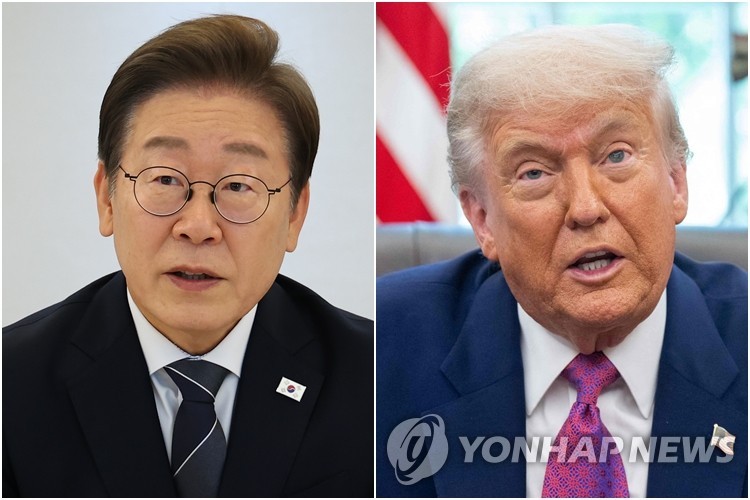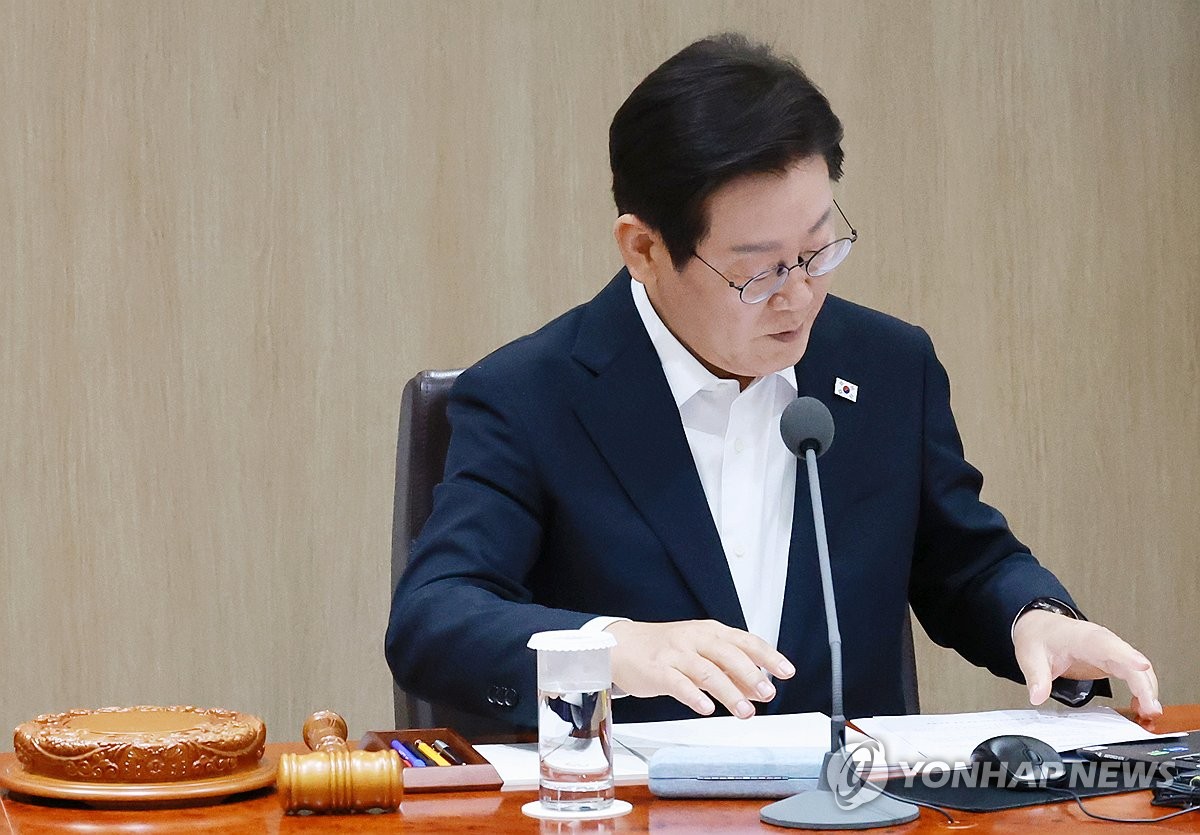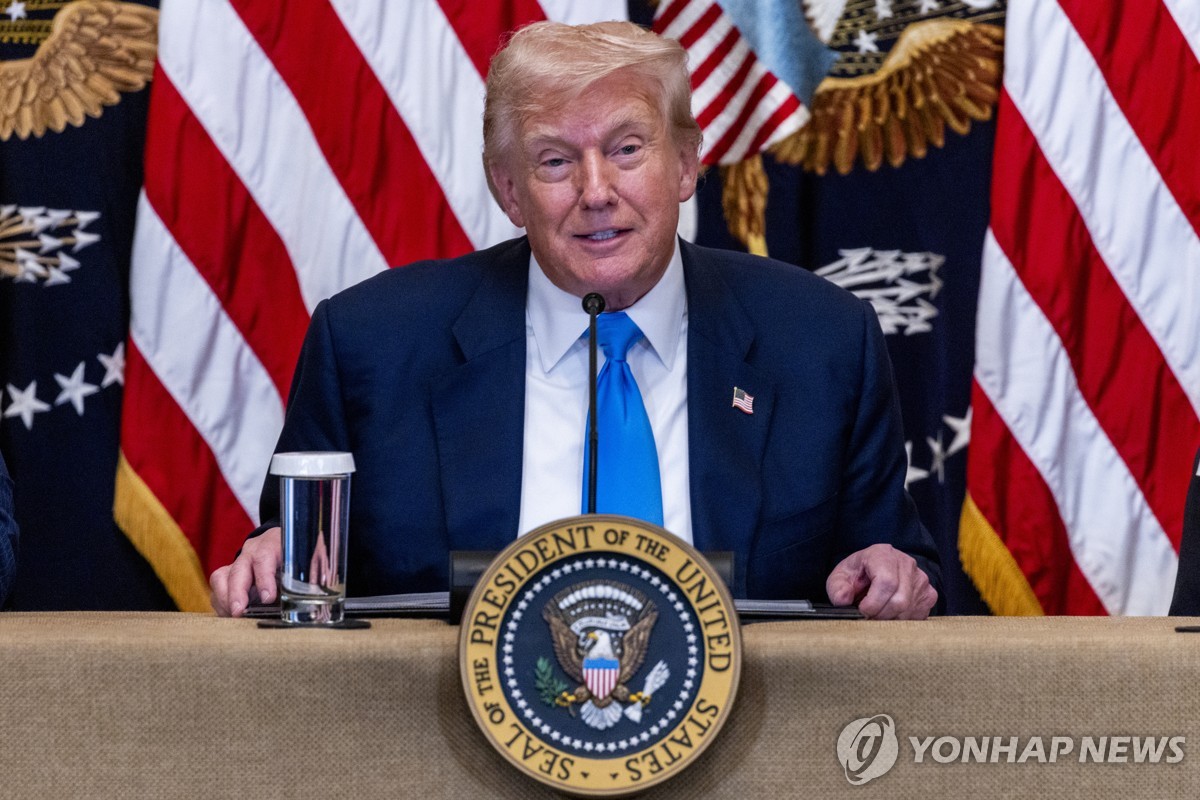Security agendas, including alliance modernization, postponed in tariff negotiations, are being discussed in earnest.
Additional investment in the US and non-tariff barriers are also potential issues; establishing initial relations is also a key issue.

(Seoul = Yonhap News) Reporters Koh Dong-wook and Hwang Yoon-ki = It is expected that sensitive issues related to security and trade will be discussed in the first summit between President Lee Jae-myung and US President Donald Trump, which will be held 82 days after his inauguration.
With the details of the previously concluded tariff negotiations expected to be finalized at the summit, it cannot be ruled out that President Trump could raise the issue of non-tariff barriers or pressure President Lee by presenting a"security bill."
Therefore, the president is expected to exert considerable effort until just before the summit to demonstrate his"negotiation skills" in order to develop the ROK-US alliance without damaging it while maximizing national interests in the face of President Trump's demands.
◇ How far does the US 'security bill' extend? Discussions include increased defense spending and flexibility for USFK.
According to political circles on the 12th, security issues that were not on the table during the previous tariff negotiations are expected to be discussed as important issues in this meeting.
The United States is strongly demanding the so-called 'modernization of the ROK-US alliance.'
Modernizing the ROK-US alliance is a concept encompassing a wide range of issues, from changes in the size and role of US forces stationed in Korea to the expanded role of the ROK military, an increase in South Korea's defense budget, and the transfer of wartime operational control.
Realistically, it will not be easy to completely reject the US' demands, so the key is to find a common ground by making concessions to a certain extent without harming the security and stability of the Korean Peninsula.
Recently, the influential American daily newspaper Washington Post (WP) reported, citing internal U.S. government documents, that during the tariff negotiations, the U.S. attempted to demand that South Korea increase its defense spending from 2.6% of its gross domestic product (GDP) to 3.8% and increase its defense cost-sharing.
It was also reported that they were considering a plan to request the South Korean government to express its position in support of the"strategic flexibility" of the US Forces Korea.
At a press conference on the 8th, Xavier Brunson, commander of the US Forces Korea and the ROK-US Combined Forces Command, made a statement suggesting the possibility of a reduction in the number of US troops stationed in Korea, saying,"What matters is capability, not numbers."
The government is said to be open to an increase in defense spending, even considering it as leverage in tariff negotiations. However, if reports are to be believed, negotiations are unlikely to be easy, as the U.S. is seeking a nearly 50% increase.
In the case of expanding the strategic flexibility of US Forces Korea, it is predicted that it will be difficult to find common ground between the two countries, as this is an issue directly related to the security environment on the Korean Peninsula.
However, as there is limited time to discuss these agendas in detail at the working level between the two countries, there are also observations that the summit will focus on reaching an agreement on a broad framework.

◇ How much of a"large investment" will Trump announce? There is also the possibility of raising issues such as the On-Line Act.
Another important task of this summit is finalizing the details of the Korea-U.S. tariff negotiations concluded at the end of last month.
Previously, the two countries agreed that the U.S. would lower its reciprocal tariffs on South Korea from 25% to 15% in exchange for South Korea investing $350 billion in the U.S.
President Trump announced this through social media, saying,"In addition, South Korea has agreed to purchase $100 billion worth of liquefied natural gas (LNG) and other energy products, and to invest significant sums of money for South Korea's investment purposes," adding,"This amount will be announced when the President comes to the White House for a bilateral meeting."
In addition, there are many points where further discussion between the two countries is needed, including the specific details of the agreement, which remain ambiguous, such as the location and method of the $350 billion investment.
As a subtle difference in temperature was revealed in the explanations between South Korea and the U.S. regarding whether to further open the rice and beef markets after the conclusion of the negotiations, attention will also be paid to whether the related questions will be clearly resolved during the summit.
It cannot be ruled out that the summit could be an opportunity for the United States to once again exert pressure by raising the issue of"non-tariff barriers" in agricultural and digital sectors, which it had postponed in tariff negotiations.
Since the tariff negotiations, Korea and the United States have continued discussions on issues such as improving quarantine procedures for agricultural products and abolishing the upper limit on recognition of equivalence in automobile safety standards.
The president's campaign promises to push for the Online Platform Act and whether to allow the export of Google's high-precision maps are also considered potential issues that the U.S. could raise as"digital non-tariff barriers."

◇ Repeatedly failed meetings between the G7 and NATO... First summit gains momentum with agreement on tariffs
There were many twists and turns before the first Korea-US summit was held.
The president pushed for an early meeting, taking into account the chaos that plagued South Korea during the initial stages of the Trump administration, which was marked by a state of martial law.
Accordingly, he attempted to meet with President Trump at the multilateral summit held immediately after his inauguration, but the meeting repeatedly fell through due to external circumstances.
At the G7 summit held in Canada in June, President Trump canceled his schedule and returned to the United States, citing instability in the Middle East.
In the case of the North Atlantic Treaty Organization (NATO) summit held in the Netherlands in the same month, President Lee did not attend after much deliberation due to the situation in the Middle East, and President Trump also did not attend the meeting of the U.S., NATO, and the Indo-Pacific Four (IP4).
Finally, the agreement reached in tariff negotiations that had continued throughout last month opened the door to a summit.
As it has been quite some time since the first meeting, it is expected that it will be crucial for the President to establish friendly relations with President Trump by demonstrating the same affability he displayed in previous summit diplomatic meetings.

